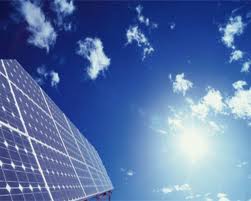The second round of the ACT government’s ground-breaking solar auction has been shared between two projects – a 13MW plant to be built by China’s Zhenfa Solar and a 7MW plant to be built by Australia’s Elementus Energy.
The result of the auction – contested by 15 bidders – was announced on Monday by ACT’s minister for the environment and sustainable development, Simon Corbell, who noted that the prices offered matched and bettered the price bid for the 20MW Royalla project that won the first round of auctioning last year.
Australian firm Elementus will build a 7MW facility called OneSun Capital Solar Farm in the district of Coree, about 30kms west of Canberra. The project will cost around $17 million. Chinese solar developer Zhenfa Solar will build a 13MW facility near Mugga Lane adjacent to the Monaro Highway to the south of the city at a cost of around $30 million.
Interestingly, both projects have a lower capital cost than the 155MW solar farm that is to be built by AGL Energy at Broken Hill and Nyngan at a capital cost of around $450 million – with around half of that to come from government grans.
The tender was the second to be held by the ACT Government as part of its “Big Solar” plan to initially allocate 40MW of capacity to solar projects. It intends to lift this to a total of 210MW, including other technologies, by 2016, as part of the the territory’s plans to reach 90 per cent renewables by 2020.
Zhenfa’s Mugga Lane solar farm will feature 53,000 solar modules with a mix of fixed and tracking systems and will generate around 24,956MWh of electricity a year. About 500kW of the array will be on a tracking system, which it says will allow more energy to be generated during peak demand periods.
The OneSun solar farm from Elementus will have 26,190 solar panels in a fixed tilt configuration and is expected to produce approximately 11,900MWh of electricity per year. It will be built on a property being used for sheep grazing. It expects that activity to continue once the farm is completed.
Zhenfa’s project will attract a fixed tariff of $178/MWh, lower than the first round of bidding. It reflects a cost of less than $150/MWh when indexing is taken into account. The Elementus project, which will combine with a 3MW facility won during bidding for the ACT government’s medium scale solar plan, was bid at $186/mWh.
The first round of bidding, which was won by Spanish group FRV also with a bid of $186/MWh, edged out nine other proposals from five competing consortia. The second round attracted 15 bids.
Corbell said the result of the auction was a good one for consumers. The total cost to households would be 45c per week once all three solar farms are up and running – less than half what was originally expected, and would attract more than $100 million of investment to the capital. (The ACT government makes up the difference between the agreed tariffs and the wholesale price of electricity).
“Our city is in transtion … to a future where energy use is smarter, more efficient and renewable,” Corbell told RenewEconomy in an interview in Canberra. “It shows that big solar comes at an affordable price.”
Morris Zhou, the head of Zhenfa Australia, said the Chinese company had identified Australia as its first priority for international development. He said Australia had the potential to provide “a large part” of the next 1GW of solar farms that the company plans to build.
It has already built around 1GW of solar projects – all in China – including the first stage of the 600MW Jin Chang solar farm in inner Mongolia. That project features a unique fixed tilt tracking technology that the company will deploy in its Australian project. It would include an education and research facility and online portal in the Mugga Lane project.
Zhou said Mugga Lane would be likely complete by the end of the financial year, meaning it could be completed before the FRV project. “This proves that the cost of solar PV is coming down,” Zhou told RenewEconomy in an interview. “That fact that it has come in a bit below FRV’s bid shows that renewable energy at an affordable price is achievable.”
He said Zhenfa was pursuing other projects in Australia, but could not provide details. “We are definitely looking at other projects. It has a great solar resource and the trading environment in Australia is in our favour.” Zhenfa set up its Australian office in 2010.
Ashleigh Antflick, the managing director of Elementus, said the 7MW array under the solar auction will combine with the 3.6MW of solar that was to be built under the medium-scale solar plan. This will allow the overall project to benefit from the 30c/kWh tariff that will be received for the medium scale solar component. This will be the company’s biggest projet to date.
The project will use a lightweight monopile structure for the arrays, which meant it could be rolled out quickly and cost-effectively. ABB Australia will be the contractor for the design, engineering, supply and commissioning and will likely lead a consortium with a civil and construction partner.
“This shows that the industry is moving through the size and the capacity of projects relatively quickly,” Antflick told RenewEconomy. “We have over 2GW of solar in Australia. Australians know it is part of the energy mix. Australians have brought into solar very whole-heartedly. The Australian market started small and is now starting to push hard and fast down the large scale path. I’m hopeful there will be many, many more large scale solar farms.”
Antflick said Elementus was looking to a 2015 completion date, because the network needed to be upgraded and approvals finalised.
Elementus was a losing bidder in the first round of tenders, but Zhenfa said it did not bid in the first round.






